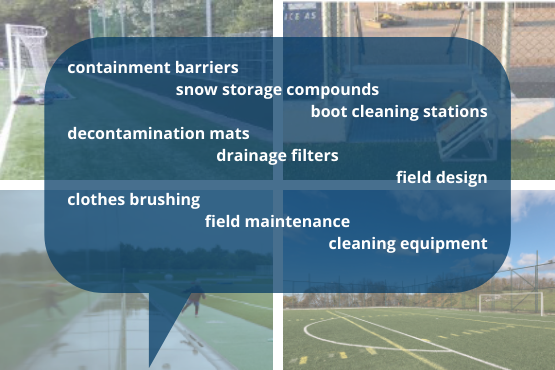As third-generation synthetic turf fields will be around for many years, an investment in risk management measures (RMMs) is the right thing to do, and, in fact, is a legal obligation.
During a webinar hosted by ESTC Affiliate Member BSNC from the Netherlands, Director General Stefan Diderich reminded delegates of their duty of care. “Protecting the environment is a legal duty that applies to any person. In most legal systems, this is recorded as the duty of care. As the current scrutiny of synthetic turf by the European Commission focuses only on the question of whether the placement onto the market of polymeric infill should be banned, the political process does not affect 3G fields already in existence. However, in the interests of the environment, society and the industry, it would be the right thing to do anyway, to fit these fields with mitigating measures to prevent the spread of polymeric infill,” he said.
The European Commission is currently reviewing options to reduce microplastic pollution from many different sources, including polymeric infill from third-generation fields. One of the options is to ban the placement onto the market of infills, effective January 2028, another being to make it compulsory to fit risk management measures.
Many solutions available
Risk management solutions are only effective when a combination of protocols, products and procedures are implemented. “Owners and users of a third-generation synthetic turf field need to understand that infill is a vital component that guarantees the durability and safety of the field. That is why it is important to use only the official entry and exit to the field. That is also why these access points should be fitted with traps to capture the infill that might stick to players’ shoes or socks after they have used the field.” Diderich also pointed out the importance of maintaining a field correctly. “Due to sliding tackles or ball surface interaction, the infill migrates to the sides of the field. It is important to recognise the presence of access infill on the sides of the field when maintaining it. Adjusting vehicle speed or ensuring leaf blowers will blow inwards are small but effective steps to keep the infill inside the field perimeter.” While these steps can help make significant improvements, the installation of containment barriers is inevitable. “Due to the low particle weight, wind or water running off a field can act as carriers. Containment barriers can go a long way to stop these mediums from transporting the polymeric infill of a field.” Guidance on risk management measures can be found in the ESTC Infill Containment Guideline.
RMMS are effective
Studies by the Dutch organisation for applied scientific research (TNO) and Swedish consultancy firm Ecoloop have established that infill migration from 3G fields can be reduced to 2mg/m2 per annum. “This is a third of the maximum quantity of polymeric infill leaving a field the European Chemicals Agency (ECHA) has proposed to accept, providing a field is fitted with risk management measures,” Diderich points out. He hopes that the European Commission will accept the 7mg/m2 per annum ECHA proposes. “Society can’t do without synthetic turf. Most cities don’t have the space to provide enough grass surfaces, not to mention the budget shortage for maintaining the field. Third-generation fields that are fitted with risk management measures will allow society to continue working on their physical and mental health, while the environment is also protected for microplastic pollution from polymeric infill.”
